
Manufacturer's Specifications:
Frequency Response: 2 Hz to 20 kHz, ±0.3 dB
De-emphasis Accuracy: ± 0.3 dB.
THD + N: Less than 0.002% at 1 kHz.
S/N Ratio: 118 dB.
Dynamic Range: Greater than 100 dB.
Wow & Flutter: Below measurable limits.
Separation Between Channels: Greater than 100 dB at 1 kHz and 20 kHz.
Output Voltage: 2.0 V.
Headphone Output: 3.0 V, 150 ohms
Programmable Tracks: 24.
D/A Conversion: 18-bit floating, with dual D/A converters.
Filters: "Hi-Bit" digital filter plus third-order analog filter.
Power Requirements: 120 Vac 60 Hz; 25 watts.
Dimensions: 17 1/8 in. W x 4 3/4 in. H x 16 7/16 in. D (43.5 cm x 12.0 cm x 41.8 cm).
Weight: 31.2 lbs. (14.2 kg).
Price: $1,199.
Company Address: 6660 Orangethorpe Ave., Buena Park, Cal. 90620, USA.

Yamaha has come up with a new "flagship" Compact Disc player, the CDX-1110U, which incorporates advanced technology that we've seen before and some ideas appearing for the first time. While several CD-player makers now use true 18-bit D/A converters in their top models, Yamaha continues with their "Hi-Bit" quasi-18-bit technology. This system converts 16 bits of the digital filter's 18-bit output, but which 16 it reads depends on the signal's two most significant bits. When the uppermost bit is a one, the converter reads the signal's uppermost 16 bits. When the uppermost bit is a zero, the converter drops down one bit, to read the middle 16 bits. When the two uppermost bits are zeros, the converter reads the signal's lowest 16 bits. Since a 1-bit shift represents a 6-dB level change, the output circuit's gain is adjusted by 6 dB for each shift. (As with most premium Compact Disc players, twin D/A converters are used here.) There is a theoretical possibility of switching glitches with these gain adjustments, but in my tests of Yamaha's Hi-Bit players, I have never seen any evidence of this.
In this latest version of Hi-Bit technology, Yamaha has added eight-times oversampling, an approach that pushes the "clock" frequency (and surrounding modulation noise spectra) way out to a center frequency of 352.8 kHz. That, in turn, makes possible the use of an extremely gentle analog output filter. In fact, the use of eight-times oversampling permits the other major innovation found in the CDX-1110U: A pair of outputs that bypass any final analog filter altogether. As Yamaha puts it, you can decide for yourself (based on listening tests and preferences) whether you want to connect your amplifier to the "direct," unfiltered output jacks or to the conventional outputs that come after the three-pole analog output filters. As I found out during my lab tests, there are advantages and disadvantages to each of these approaches.
The CDX-1110U features a new three-beam laser pickup that utilizes a glass lens in a die-cast aluminum chassis. A newly designed, high-speed linear motor and an 8-bit microcomputer control the optical head feed. Access time to any point on the disc is less than 1 S. The player employs a shunt-regulated power supply. Optical and coaxial digital outputs are provided, in addition to the two sets of analog outputs already mentioned.
Another unusual feature of this CD player is its 20-bit, digital volume control which, since it operates in the digital domain, alters output levels in precise 0.4-dB steps without increasing noise at any level. A further advantage of having a volume control in the CD player is the ability to connect directly to a power amplifier, thereby keeping the overall signal path as short and direct as possible.
Additional convenience features include a 44-key wire less remote control, 24-track access via remote or front-panel keypad, 24-track random-access programming. random play, four-way repeat play, index search, three-way music search, selectable space insert (pause) between tracks, and an eight-digit fluorescent display that includes the now-familiar calendar display of available tracks on a disc. The CDX-1110U has a floating-suspension chassis to minimize interference or possible mistracking caused by external shock or vibration.
Control Layout
The front-panel design of the CDX-1110U is fairly conventional. The now-familiar disc drawer is at the left. Below the drawer are the power on/off switch, buttons for "Space Insert," "Index," and "Random Play," two buttons associated with the various repeat-play functions, and three associated with random programming. (While it is possible to access index points within a given track directly, it is not possible to program specific index points. Only track numbers can be programmed.) The large display window to the right of the disc drawer provides no less than 14 distinct indications: Disc, track, index, program number, three forms of time display (remaining, total time of disc, and elapsed time of track), play, search, output level, and music calendar are just some of the major items displayed here. Repeat-play mode, auto-space on, random play selection, and various programming functions and indications are also shown. As a user, you see exactly what the player is doing at all times.
To the right of the display window are "Up" and "Down" audio-level pushbuttons, "Time Display" button, the remote-control sensor window, and a stereo headphone jack. Below the display window are 11 numbered buttons (0 through 9 and a "+ 10" button used for selecting tracks whose numbers exceed 10). Below the number buttons are an "Open/ Close" pushbutton for activating the disc drawer, "Play," "Pause/Stop," track advance and reverse buttons, and fast-forward and reverse buttons for audible search. Just about all of the operating controls, including the volume adjustment and even the "Open/Close" drawer function are also found on the supplied wireless remote. I've never been able to figure out the purpose of putting the "Open/Close" function on a remote since, once I've opened the drawer remotely, I still have to approach the player to insert or remove a disc. But I guess having this feature on a remote control does no harm and probably adds only minimally to the cost of the total system.
The two pairs of analog line output jacks on the rear panel of this player are labeled "Direct" and "Filter." There are also coaxial and optical digital output terminals on the rear panel. In order to use either one, a slide switch labeled "Digital Out," also found on the rear panel, must be switched on. No optical cable is supplied by Yamaha, but these are now becoming readily available and are often packed with separate D/A converters or integrated amplifiers that have optical digital inputs. The type of optical terminal used on this CD player, as well as the optical cable that connects to it, have become standardized, so any optical cable will plug into this unit's optical output.
The Yamaha CDX-1110U is one of the heaviest CD players I have tested to date, weighing in at over 31 pounds.
Much of this weight comes from the solidly built chassis and the shielding materials, not to mention the two, large power transformers, which I will discuss shortly.
Measurements
Figure 1 is the frequency response of the CDX-1110U, using the swept-frequency band of the EIA-approved CD-1 test disc produced by CBS Records. Response was plotted from 10 Hz to 20 kHz. The upper curve, representing the left-channel output, was deliberately displaced slightly from the 0-dB reference so that it could be examined separately from the response of the right channel. Left-channel response was down about 0.15 dB at 20 kHz, while right-channel response was off by about 0.3 dB at that same frequency. Yamaha specifies a tolerance of ±0.3 dB, so their claims for frequency response are met.
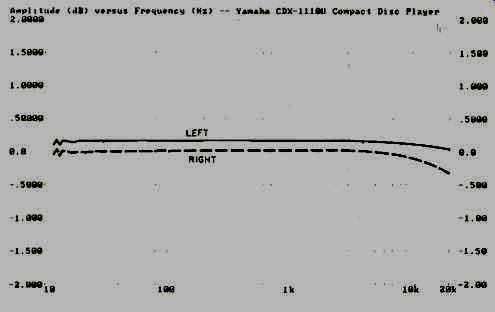
Fig. 1--Frequency response of left and right channels, using filtered output
jacks. Curves have been separated for clarity.
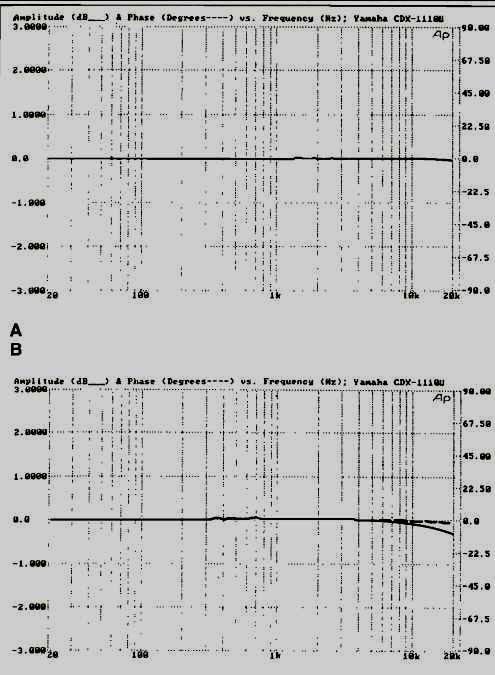
Fig. 2--Comparison between amplitude response of one channel (solid curve)
and relative phase response (dashed curve) of opposite channel, for unfiltered
(A) and filtered (B) outputs. Phase, in degrees, can be read from right-hand
scale.
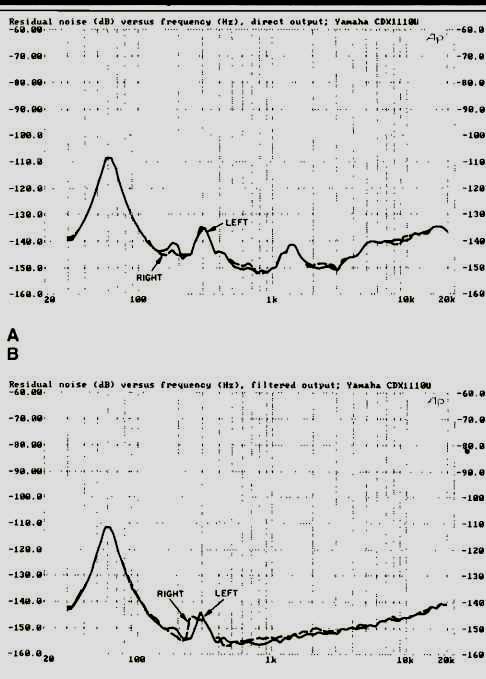
Fig. 3--Residual noise vs. frequency for "quiet" track of CD-1 test
disc, using unfiltered (A) and filtered (B) outputs. Note rise in noise level
at 60-Hz power-line frequency and its second harmonic.
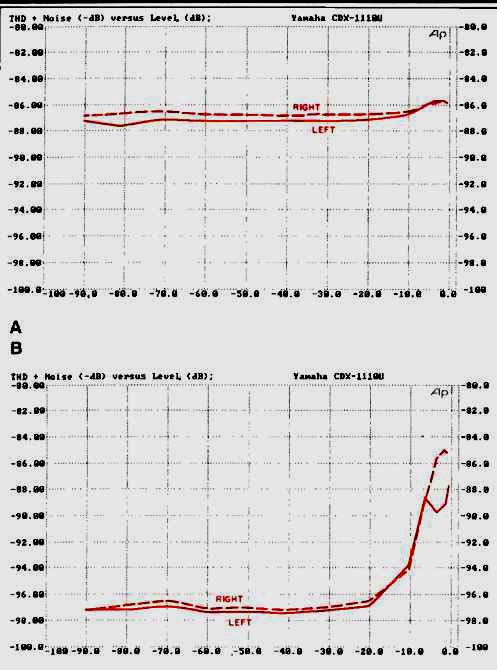
Fig. 4--THD + N vs. signal level for unfiltered (A) and filtered (B) outputs.
Note shift of scale from Fig. 3.

Fig. 5--THD + N vs. frequency. Results were virtually identical for both channels,
whether measured from direct or filtered outputs.
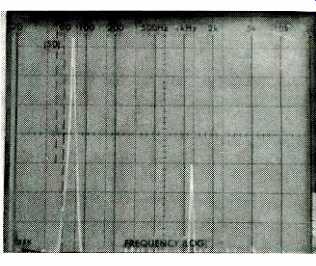
Fig.
6--Spectrum analysis of 20-kHz signal. Note that sweep is from 0 to 100 kHz,
and that there are no non-harmonic beats. (See text.)
Interchannel phase response is plotted in Figs. 2A and 2B. I measured this parameter twice, first using the direct (unfiltered) output (Fig. 2A) and then the filtered output (Fig. 2B). Notice that in Fig. 2A, both frequency response and phase response are very nearly perfect, while the analog filter does have some influence on these parameters, gentle though it may be. Here, then, is one argument for connecting the outputs of this Compact Disc player via the direct output jacks.
On the other hand, results of my residual analog noise plots (Figs. 3A and 3B) seem to argue in favor of the filtered output connections. At all measured frequencies, noise levels were slightly higher when measured from the direct outputs (Fig. 3A) than the filtered outputs (Fig. 3B). Even the 60-Hz peak (attributable to the power-supply line frequency) was slightly higher (around -109 dB) in Fig. 3A than in Fig. 3B, where it shows up at about -112 dB.
Single-value overall measurements of S/N, using the same quiet track of the CD-1 test disc and an A-weighting filter, resulted in less of a difference between the two types of measurements: -103.5 dB for the unfiltered output and -103.7 dB for the filtered output. So, since the A-weighted curve approximates subjective audibility, don't expect to hear a difference in background noise when you switch from one set of outputs to the other.
Results shown in the graphs of Figs. 4A and 4B also favor the use of the filtered outputs, without question. Here I plotted so-called THD + N as a function of recorded level, referenced to maximum (0 dB) output levels. For the direct, unfiltered outputs (Fig. 4A), THD + N remained close to -87 dB over the entire amplitude range from 0 dB down to -90 dB. When I switched to the filtered outputs and re plotted the graphs (Fig. 4B), THD + N was about the same at highest output levels but dropped way down to around -97 dB at lower recorded levels. From other observations concerning this CD player, I concluded that the only reason why the entire curve of Fig. 4B wasn't at about -97 dB was because the analog (post-D/A) stages had a tendency to show increasing levels of ordinary analog THD as signal levels approached maximum.
Figure 5 shows how THD + N varied with frequency for signals at maximum recorded level. As mentioned above, there was little difference between results obtained via the unfiltered and filtered outputs, so I saw no purpose in presenting two separate graphs for this measurement. At 1 kHz, THD + N reads about 0.006%. Translated to dB, this works out to about 85 dB, which is in close agreement with results for maximum recorded level (Figs. 4A and 4B).
Single-value overall readings of SMPTE-IM distortion at maximum recorded level yielded readings of 0.0113% and 0.0086% for left- and right-channel unfiltered outputs, and almost identical readings of 0.0107% and 0.008% for left and right filtered outputs.
The benefits of properly designed digital filtering and eight-times oversampling are evident from the 'scope photo in Fig. 6. Had I confined the spectrum-analyzer sweep to my usual range of from 0 Hz to 50 kHz, all you would have seen is the desired 20-kHz tall "spike" at the left of the photo.
Since better CD players such as this one (and a few others I've measured recently) show no spurious output products in the range from 0 Hz to 50 kHz, I decided to extend the linear sweep to 100 kHz, with each horizontal division now corresponding to 10 kHz. There are still no spurious outputs.
The two shorter spikes evident at 60 and 100 kHz are simply the expected, inaudible, third- and fifth-harmonic distortion components of the desired 20-kHz signal. No other non-harmonically related "beats" or spurious signal components are evident.
Figure 7, a plot of channel separation versus frequency, yielded extremely surprising results. I can't remember any other time when separation decreased with decreasing frequencies! Yamaha is apparently aware of this peculiarity, too, since their published specifications call for separation in excess of 100 dB at 1 kHz and 20 kHz. That claim is met, as you can see from Fig. 7, but at 125 Hz, separation decreased to about 84 dB. Nothing to worry about, of course, but simply an oddity for which I can offer no immediate explanation.
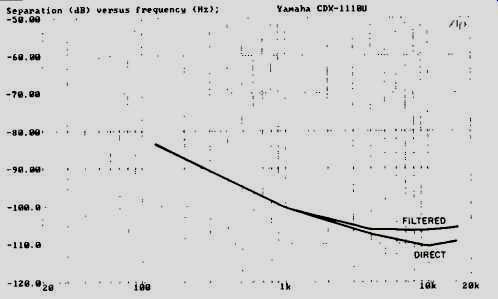
Fig. 7--Interchannel separation. Note the unusual slope and the increased high-frequency
separation from the direct, unfiltered output. (See text.)
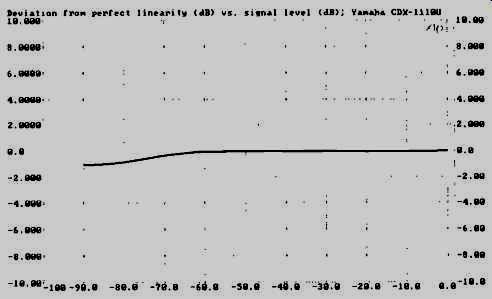
Fig. 8--Deviation from perfect linearity for undithered 1-kHz signal at levels
from -90 to 0 dB. Deviation was virtually identical for both channels.
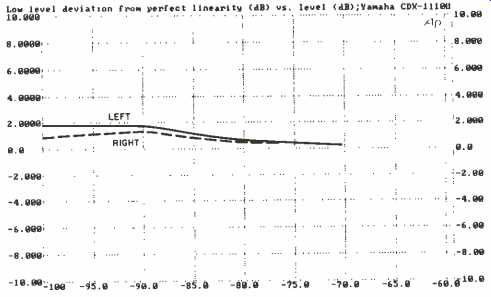
Fig. 9--Deviation from perfect linearity for dithered 1-kHz signal at levels
from -100 to -70 dB.

Fig. 10--Linearity deviation for EIA "Fade to Noise-dynamic-range test,
using dithered signal.

Fig. 11--Monortonicity test. Note excellent linearity at low signs[ levels.

Fig. 12--Reproduction of 1-kHz square wave.

Fig. 13--Single-pulse test.

Fig. 14--Comparison of phase error vs. frequency for filtered and direct outputs.
(Note linear frequency scale.) At 20 kHz, error amounted to nearly 72° from
filtered output, 5° from direct.
I know of only one or two other CD players that reproduce low-level signals with linearity as nearly perfect as the Yamaha CDX-1110U's. Consider the results shown in Fig. 8, a plot of deviation from perfect linearity versus undithered signal levels. Here, maximum deviation at -90 dB was no more than 1.0 dB. Using low-level dithered signals from recorded levels of -70 to -100 dB, deviation from perfect linearity (Fig. 9) was a mere 1.0 dB for the right channel and about 2.0 dB for the left channel at levels of -100 dB. That's standout performance, to say the least.
There are currently two methods for specifying dynamic range for a CD player. Using the EIAJ Standard, the results showed a dynamic range of approximately 88 dB, regard less of whether the measurement was made from the direct or the filtered outputs. With the proposed EIA method, dynamic range was slightly in excess of the 98-dB theoretical maximum, confirming the very slight deviation from perfect linearity observed for the D/A converters used in this player. The "Fade to Noise" track provided on my CD-1 test disc gives further proof of the excellent linearity of this player at extremely low levels (Fig. 10).
The final track of the CD-1 test disc contains test signals that are not specifically called for in the proposed EIA Standards for CD Player Measurement. Used in combination with the other linearity-checking signals, this one is employed in what is called a monotonicity test. The signal consists of a special series of square waves. The peak of the repeating waveform starts at "digital zero" and in creases by 1 LSB (least significant bit) after every five cycles, to a maximum of 10 LSB. Averaged steps should always increase on the positive side and decrease on the negative side. Ideally, the steps should be equal in size.
Both of these requirements seemed perfectly met when playing this signal on the CDX-1110U, as is evident in the 'scope photo of Fig. 11. (More than one repetition of the ascending waveform is shown because of the difficulty of synchronizing this signal.)
As usual, I tried to measure wow and flutter for this player quantitatively, but as has nearly always been the case, my test equipment produced a trace running along the zero baseline for the full 30 S of the test. (In other words, there was no measurable wow and flutter.) As for clock-frequency accuracy, it was off by an insignificant -0.0163%.
Figure 12 shows how a 1-kHz square-wave test signal was reproduced by the CDX-1110U, while Fig. 13 shows how a unit pulse was reproduced. It is apparent that polarity inversion has taken place within the analog output stages of the player, since non-inversion circuits always yield a positive-going reproduced pulse, whereas the pulse in Fig. 13 is negative going. (This polarity inversion, was the same with the direct and the filtered outputs.) Finally, I wanted to check Yamaha's claims concerning the advantages of a CD player with filterless outputs. To make a meaningful test, I had to go inside the unit and get at the recovered signal, right at the point where it comes out of the D/A converter. (There is one Burr-Brown type PCM56 for each channel.) I treated the signal, at this point, as one channel of an interchannel phase-comparison test and connected the filtered output of the same channel as my "second" channel. I then ran a phase-comparison test between the two signals as a function of frequency. The results are shown in Fig. 14. Notice that the horizontal scale in this graph is linear rather than logarithmic. Thus, the phase shift caused by the analog output filters is almost a straight line and is more easily examined. At 20 kHz, this phase error has reached a value of 72° (top curve). When I repeated this measurement, comparing the output from the D/A converter to that at the direct, unfiltered output, the maximum phase error at 20 kHz was only 5°. This is, perhaps, the most important advantage of the unfiltered, direct output connection in a CD player.
Use and Listening Tests
For my subjective listening tests, I chose four Compact Discs designed to show up specific aspects of sound reproduction. Delos' The Symphonic Sound Stage (D/CD 3502) offers a variety of cuts from different symphonic selections that not only exercise the dynamic-range capabilities of a sound system but enable me to judge stereo imaging, depth of sound field, and musical accuracy of individual instruments. Bands 7 and 8 of this sampler contain piano and cello solos that are well recorded and, on a CD player such as this, sound amazingly lifelike. For smaller orchestral works, I used Telarc's new recording of three short Mozart symphonies-No. 25, No. 28, and No. 29 (CD-80165). Instrumental definition, as reproduced by the Yamaha player, was superb. Owing playback of this particular recording, I was able to detect one of the advantages of the direct output connection. Stereo imaging, while good with either connection mode, seemed just a bit more stable and easily defined when I used the direct, unfiltered connection.
For bigger, more dynamic sounds, I chose another Delos recording, Wagner 2 (D/CD 3053), which features orchestral excerpts from Richard Wagner's operas The Flying Dutch man, Parsifal, and Lohengrin. These excerpts offer excellent examples of wide dynamic range and complex orchestration. They are best appreciated when heard on a top CD player such as this and through an amplifier and speaker system that can handle them with negligible distortion.
Finally, I listened to a bit of Bach's Prelude and Fugue in E Minor, a Telarc recording (CD-80169) with Michael Murray playing the organ in New York City's Cathedral of St. John the Divine. It is gratifying to note that, as Compact Discs get better and better (and there's no question but that the best of them are very good these days), CD players are also improving in ability to sonically reproduce those discs.
The only minor irritation I felt regarding the user controls and features of the CDX-1110U concerned its inability to program selections by index numbers. Further, the method of calling up an index number for instant access or play back is a bit awkward, in that you first must press the track number, then the index button, and finally the index number.
There's also no easy way to advance from one index point to the next within the same track. These ergonomic limitations, however, in no way detract from the sonic superiority of this player. Yamaha's latest entry deserves to be ranked among the very finest machines currently available, and that includes several costing much, much more than the relatively modest-priced CDX-1110U.
--Leonard Feldman
[adapted from AUDIO magazine, Sept. 1988]
Yamaha CDX-5000 Compact Disc Player (Jan. 1988)
Yamaha CDX-2020 Compact Disc Player (Dec. 1989)
Yamaha CD-X1 Compact Disc Player -- vintage second-generation CD player (Aug. 1984)
Yamaha K-1020 Cassette Deck (Mar. 1986)